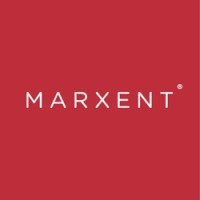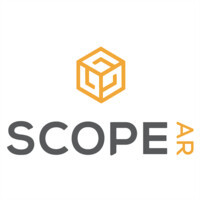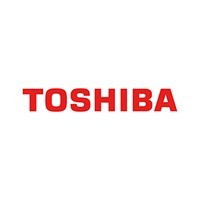Description

magicplan

Marxent Labs
Comprehensive Overview: magicplan vs Marxent Labs
Magicplan and Marxent Labs offer distinct solutions in the realm of augmented reality (AR) and space planning, targeting various industries with innovative technologies.
Magicplan
a) Primary Functions and Target Markets:
- Primary Functions: Magicplan is a mobile app designed for creating floor plans, estimating costs, and planning construction projects. The app enables users to measure, sketch, and furnish residential and commercial spaces using just their smartphone cameras. Magicplan also includes features for reporting, inspection, and collaboration, making it a versatile tool for professionals.
- Target Markets:
- Real Estate Agents: For creating and sharing professional-looking floor plans.
- Interior Designers and Decorators: For planning and visualizing home and office layouts.
- Construction and Renovation Contractors: For project estimation and planning.
- Insurance Adjusters: For documenting and assessing property conditions.
b) Market Share and User Base:
- While specific market share numbers are not readily available, Magicplan has a strong presence in the market as one of the leading tools for mobile-based space planning. It boasts millions of downloads on app stores, highlighting its popularity among professionals in construction, real estate, and design sectors.
c) Key Differentiating Factors:
- Ease of Use: Magicplan's user-friendly interface and its ability to function using just a smartphone camera without the need for additional hardware set it apart.
- Integration Capabilities: It supports a variety of integrations with tools like Excel, AutoCAD, and other construction management software, enhancing its usefulness in complex workflows.
- Cost Estimation: The app provides robust features for estimating project costs, making it particularly valuable for contractors.
Marxent Labs (Now called 3D Cloud™ by Marxent)
a) Primary Functions and Target Markets:
- Primary Functions: Marxent (3D Cloud™ by Marxent) focuses on 3D content management and augmented reality solutions. Their platform enables retailers and manufacturers to create, deploy, and manage 3D and AR product content at scale.
- Target Markets:
- Retail Industry: Particularly home furnishings and DIY retailers looking to enhance the shopping experience with 3D visualizations.
- Manufacturers: For displaying product demonstrations and configurations in AR.
- E-commerce Platforms: To provide online shoppers with interactive and immersive experiences.
b) Market Share and User Base:
- Marxent has established itself as a leader in 3D content management for retail, partnering with major home furnishing and DIY brands. Though precise market share data is elusive, its collaborations with well-known retailers indicate a substantial influence in its niche.
c) Key Differentiating Factors:
- 3D Cloud Platform: A comprehensive solution for managing and hosting 3D models, allowing clients to leverage AR across multiple channels.
- Customizability and Scalability: The platform is highly customizable and scalable, suitable for large retailers managing extensive product catalogs.
- AR-Powered Visualization: Advanced AR capabilities provide realistic product visualization, enhancing customer engagement and conversion rates.
Comparison and Differentiation
- Functionality Focus: Magicplan is primarily focused on space planning and on-site applications, whereas Marxent targets retail with a strong emphasis on 3D visualization and AR for a better shopping experience.
- Target Audience: Magicplan's versatility appeals to a range of professionals in construction and real estate, while Marxent is more tailored to the retail sector, especially in home furnishings.
- Technology Utilization: Both leverage mobile and AR technology, but Marxent's focus is on applying these to product visualization rather than space measurement and planning.
In summary, while both Magicplan and Marxent harness mobile and AR technologies, their applications, functionalities, and target markets are distinct, each enjoying robust user bases and market positions within their respective domains.
Contact Info

Year founded :
2010
+1 833-750-2616
Not Available
Canada
http://www.linkedin.com/company/magicplanapp

Year founded :
Not Available
Not Available
Not Available
Not Available
Not Available
Feature Similarity Breakdown: magicplan, Marxent Labs
Analyzing the feature sets of Magicplan and Marxent Labs reveals both commonalities and differences that are crucial for users interested in spatial planning and visualization technologies. Here's a breakdown:
a) Core Features in Common
-
3D Visualization: Both Magicplan and Marxent Labs offer robust 3D visualization capabilities, allowing users to create and manipulate spatial arrangements to get a realistic sense of space and design.
-
Augmented Reality (AR) Integration: Both platforms leverage AR technology to enable users to visualize how objects will look in the real world, enhancing the interior design and planning experience.
-
Cloud-Based Access: Both systems provide cloud integration to store projects and facilitate easy access, collaboration, and sharing across different devices and teams.
-
Measurement and Planning Tools: Both Magicplan and Marxent Labs include tools for precise measurement and floor plan creation, crucial for delivering accurate spatial representations.
-
Multi-Platform Support: These products are accessible on various platforms, including mobile devices, which enhances their usability on-site and in client consultations.
b) Comparison of User Interfaces
-
Magicplan: The user interface of Magicplan is designed with simplicity and ease-of-use in mind, aiming at both professionals and DIY users. It provides a clean, intuitive layout with step-by-step guidance to create floor plans, supporting quick and efficient project setup and implementation.
-
Marxent Labs: Marxent tends to focus more on the enterprise user with a sophisticated and feature-rich interface. It offers customization options and a more detailed dashboard, usually appealing to large retail businesses that require detailed and customizable 3D content services.
c) Unique Features
- Magicplan's Unique Features:
- Mobile-Centric Design: Magicplan has been optimized heavily for mobile devices, allowing users to create floor plans simply by taking photos of the space. This is particularly appealing for use in on-site settings where quick and accurate capture is necessary.
- DIY User Focus: Magicplan is more approachable for non-professional users looking to plan renovations or home improvements without advanced technical skills.
- Marxent Labs' Unique Features:
- Virtual Reality (VR) Showrooms: Marxent offers advanced VR showroom capabilities, providing an immersive shopping experience that is especially beneficial for furniture retailers.
- Enterprise Solutions: Marxent is geared toward enterprise clients, providing custom solutions, scalability, and integrations tailored to large-scale business operations.
- Product Configurators: The platform includes sophisticated product configurators, allowing retailers to offer customizable product options within a virtual space.
Overall, while both products offer powerful features for spatial visualization and planning, Magicplan leans more towards accessibility and ease of use for individual users and small teams. In contrast, Marxent Labs caters to large businesses requiring extensive customization and high-end VR capabilities.
Features

Accurate Measurements
Rich Media Annotations
Easy Floor Plan Creation
Collaboration and Sharing
Project Estimation

User-Friendly Interface
Integration and Compatibility
Virtual Reality Visualization
Customer Support
Best Fit Use Cases: magicplan, Marxent Labs
Magicplan and Marxent Labs cater to different aspects of augmented reality (AR) and 3D visualization, making them suitable for distinct use cases. Here’s how they fit into various business environments:
Magicplan
a) Best Fit Use Cases for Magicplan:
-
Real Estate Professionals: Magicplan is excellent for real estate agents and property managers who need to create floor plans quickly and with minimal fuss. Its ability to generate floor plans using a smartphone or tablet is particularly advantageous for real-estate listings, inspections, and property management.
-
Contractors and Construction Firms: Businesses involved in renovation, interior design, or construction can benefit from magicplan's ability to produce detailed plans and cost estimates. It’s particularly useful for small to medium-sized construction projects where ease of use and quick turnaround are priorities.
-
Home Improvement and Renovation Companies: These businesses can use magicplan to provide clients with detailed visualizations of proposed changes, facilitating better communication and expectation setting.
-
Insurance Adjusters: Magicplan can be used by insurance adjusters to document damage and create accurate property assessments, helping streamline the claims process.
d) Industry Verticals and Company Sizes:
- Verticals: Primarily serves the real estate, construction, home renovation, and insurance sectors.
- Company Sizes: It is ideal for small to medium-sized enterprises (SMEs) due to its cost-effectiveness and simplicity.
Marxent Labs
b) Preferred Use Cases for Marxent Labs:
-
Retail and E-commerce: Marxent Labs is well-suited for retailers, especially those in furniture, home goods, and large appliances, looking to implement 3D product visualization and AR experiences. It enhances the online shopping experience by allowing customers to see how products fit in their space.
-
Manufacturers: Companies that manufacture customizable or large-scale consumer products can leverage Marxent’s capabilities to provide virtual product testing and visualization.
-
Architecture and Design Firms: Professionals in architecture and interior design can use Marxent's technology for virtual showrooms or to prototype designs, allowing for detailed and engaging client presentations.
-
Automotive Industry: For car dealerships wanting to offer virtual tours or custom configuration of vehicles, Marxent can provide a realistic and interactive buyer experience.
d) Industry Verticals and Company Sizes:
- Verticals: Marxent serves sectors like retail (particularly furniture and home decor), manufacturing, architecture, and automotive.
- Company Sizes: It is typically a better fit for larger companies or enterprises that can invest in customized, high-tech solutions that enhance customer experience and streamline the sales process.
Conclusion
Magicplan excels in straightforward floor plan creation and documentation, making it perfect for small to medium-sized businesses in the real estate and construction fields. In contrast, Marxent Labs specializes in creating immersive and customizable 3D and AR experiences, which are ideal for larger retailers and manufacturers aiming to revolutionize their customer engagement strategies. Both cater to distinctive needs within their respective industry verticals, and the choice between them largely depends on the specific requirements and scale of the business operations involved.
Pricing

Pricing Not Available

Pricing Not Available
Metrics History
Metrics History
Comparing teamSize across companies
Conclusion & Final Verdict: magicplan vs Marxent Labs
To provide a well-rounded conclusion and final verdict on magicplan and Marxent Labs, it's important to evaluate the overall value proposition, pros and cons, and specific recommendations for potential users.
Conclusion and Final Verdict
a) Considering all factors, which product offers the best overall value?
Determining the best overall value between magicplan and Marxent Labs largely depends on the specific needs of the user. If the primary requirement is for interior design and floor planning with comprehensive reporting and estimation tools, magicplan offers robust solutions at an affordable price. Meanwhile, if a user requires sophisticated 3D visualization and augmented reality experiences for sales and marketing, particularly in the furniture and home improvement sectors, Marxent Labs stands out as the superior choice. Therefore, the best value is contingent on the specific use case: magicplan for practical design and estimation needs, and Marxent Labs for immersive, high-end 3D visualization.
b) What are the pros and cons of choosing each of these products?
Magicplan:
Pros:
- Ease of Use: Magicplan is user-friendly, requiring minimal technical expertise to create floor plans.
- Affordability: It offers a cost-effective solution for small to medium-sized projects.
- Mobile Accessibility: Users can capture and edit plans on-the-go using a mobile device.
- Integration: Provides seamless integration with other professional tools for reporting and estimation.
Cons:
- Limited Advanced Features: While comprehensive for basic planning, it may lack advanced 3D visualization tools compared to dedicated design software.
- Complex Customization: High-level customization can be challenging, limiting its use in highly complex projects.
Marxent Labs:
Pros:
- Advanced 3D Visualization: Offers cutting-edge 3D and augmented reality experiences ideal for sales presentations and client engagement.
- High Customization: Allows for extensive customization suited to large-scale, complex projects.
- Industry-Specific Solutions: Specifically tailored for retail, furniture, and building supply sectors.
Cons:
- Higher Cost: More expensive than basic design software, making it potentially less accessible for smaller companies or individual users.
- Complex Setup: Generally requires more time and resources to set up and manage.
c) Are there any specific recommendations for users trying to decide between magicplan vs Marxent Labs?
-
Assess Needs and Budget: Users should start by evaluating their specific needs and budget constraints. If the requirement is primarily for design, estimation, and shareable site plans, with a focus on cost-efficiency, magicplan is likely the better fit.
-
Consider Industry Requirements: Marxent Labs should be considered by users in industries like retail or home building, where high-quality 3D visualization and virtual product merchandising provide a competitive edge.
-
Trial and Evaluation: Users are encouraged to explore trial versions or demos of each product when available to assess usability, feature sets, and compatibility with existing workflows.
-
Integration and Technical Requirements: It's crucial to consider how each software integrates with other tools in your ecosystem and the technical requirements involved in deploying these solutions.
In conclusion, both magicplan and Marxent Labs have unique strengths tailored to different applications. By carefully evaluating their own needs and objectives, users can determine which platform aligns best with their goals, ensuring they derive the maximum value from their investment.
Add to compare
Add similar companies



